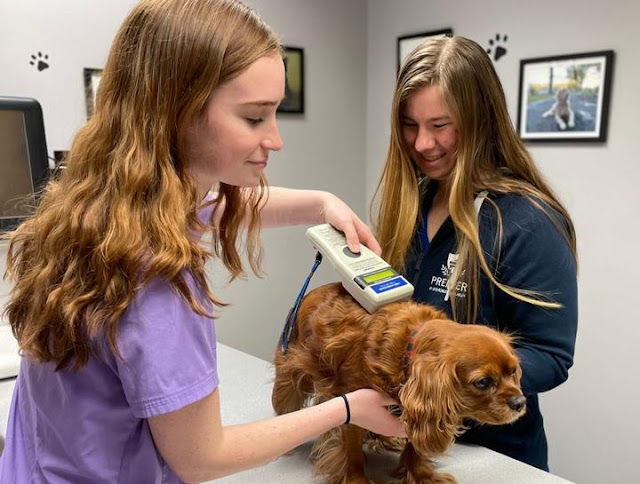Introduction
Losing a beloved pet can be a distressing experience for any pet owner. The anxiety and worry about their safety and well-being can be overwhelming. Fortunately, advancements in technology have provided a solution to this problem - pet microchipping. In this comprehensive guide, we will explore the importance of pet microchipping and how it significantly contributes to the safe return of lost pets.
Understanding Pet Microchipping
Pet microchipping involves inserting a small, rice-sized microchip under the skin of your pet, typically between the shoulder blades. The microchip contains a unique identification number that can be scanned using a microchip reader. This identification number is linked to a pet registry database, which holds essential information about the pet and its owner.
How Pet Microchips Work
When a lost pet is found, animal shelters, veterinary clinics, and rescue organizations can scan the microchip to obtain the pet's identification number. This number is then used to access the pet registry database, which contains the pet owner's contact information. The pet owner can be notified, facilitating a safe and swift reunion with their lost furry friend.
The Importance of Pet Microchipping
1. Permanent Identification:
Pet collars and ID tags can be lost, damaged, or removed. Microchips, on the other hand, provide a permanent form of identification that remains with the pet throughout its lifetime.
2. Increased Chances of Recovery:
According to the American Veterinary Medical Association, pets with microchips are more than twice as likely to be reunited with their owners compared to those without.
3. Global Reach:
Microchips are not limited by borders. If a lost pet is found far from home, the microchip can still be scanned, and the owner can be contacted, facilitating a safe return.
The Microchipping Process
The process of microchipping is relatively simple and virtually painless for your pet. A veterinarian or a trained professional will use a syringe to inject the microchip under your pet's skin, typically around the neck area. The procedure is similar to a routine vaccination and takes only a few seconds.
Registering Your Pet's Microchip
Once your pet is microchipped, it's crucial to register the microchip with a reputable pet registry database. Provide accurate contact information and ensure that you update it whenever there's a change in your address or phone number. This ensures that you can be reached promptly if your pet is found.
Checking and Updating Information
Regularly check the contact information associated with your pet's microchip to ensure it is up to date. If you've moved or changed your phone number, update the registry immediately to enhance the chances of a successful reunion in case your pet is lost.
Pet microchipping stands as a crucial and invaluable tool in safeguarding the safety and well-being of our beloved furry companions. The peace of mind it offers to pet owners is unparalleled, especially in the unfortunate event that a pet goes missing. In such distressing times, the presence of a microchip significantly elevates the chances of a safe and timely reunion with our cherished pets. Taking the responsible step of having your pet microchipped and ensuring their registration in a reputable pet database is an essential act of love and care. After all, when it comes to our pets, their safety and security are worth every effort and precaution we take.
The process of pet microchipping is simple, quick, and relatively painless for the pet. A tiny microchip, about the size of a grain of rice, is inserted under the pet's skin, typically between the shoulder blades, using a specialized syringe. This microchip holds a unique identification number that serves as a lifelong link to the pet owner's contact details. Whenever a lost pet is found and scanned with a microchip reader, this identification number is revealed. Subsequently, the concerned authority accesses a centralized pet registry database, linking it to the pet owner's vital information.
Also read:
Dog Grooming Near Me: All You Need to Know in UK
The advantages of pet microchipping are manifold. Firstly, it offers permanent identification for your pet, overcoming the limitations and risks associated with collars and ID tags. These can get lost, damaged, or even purposely removed, rendering them ineffective. However, a microchip provides a reliable and enduring form of identification that remains with the pet throughout its life. Moreover, research by the American Veterinary Medical Association indicates that pets with microchips have over twice the chance of being reunited with their owners compared to those without.
Another significant advantage lies in the global reach of microchips. Should a pet go missing and be found far from home, the microchip can still be scanned, and the pet owner can be promptly contacted, transcending geographical boundaries. This feature adds an extra layer of reassurance for pet owners, especially those who may travel with their pets or have pets prone to wander.
Conclusion,
In conclusion, the decision to microchip your pet and register it in a reputable database is a responsible and caring choice. It's an investment in your pet's safety and a demonstration of your commitment to their well-being. The comfort and peace of mind that come with knowing you've taken proactive steps to enhance the likelihood of a safe reunion with your pet are immeasurable. Your beloved pet deserves nothing less than the best protection and care, and pet microchipping is a pivotal aspect of ensuring their security. Make this responsible choice, and cherish the joy of a safe and secure bond with your furry companion.


















0 Comments